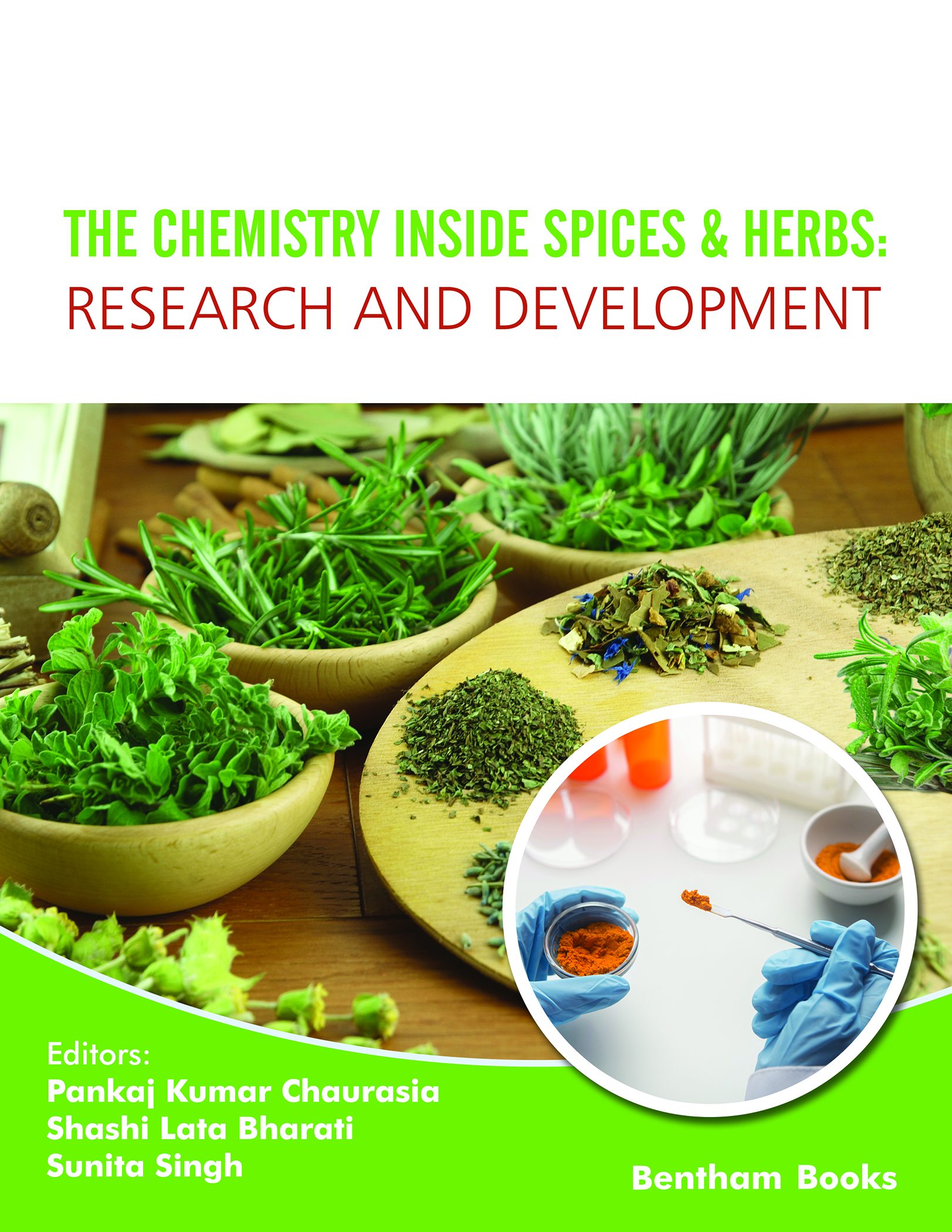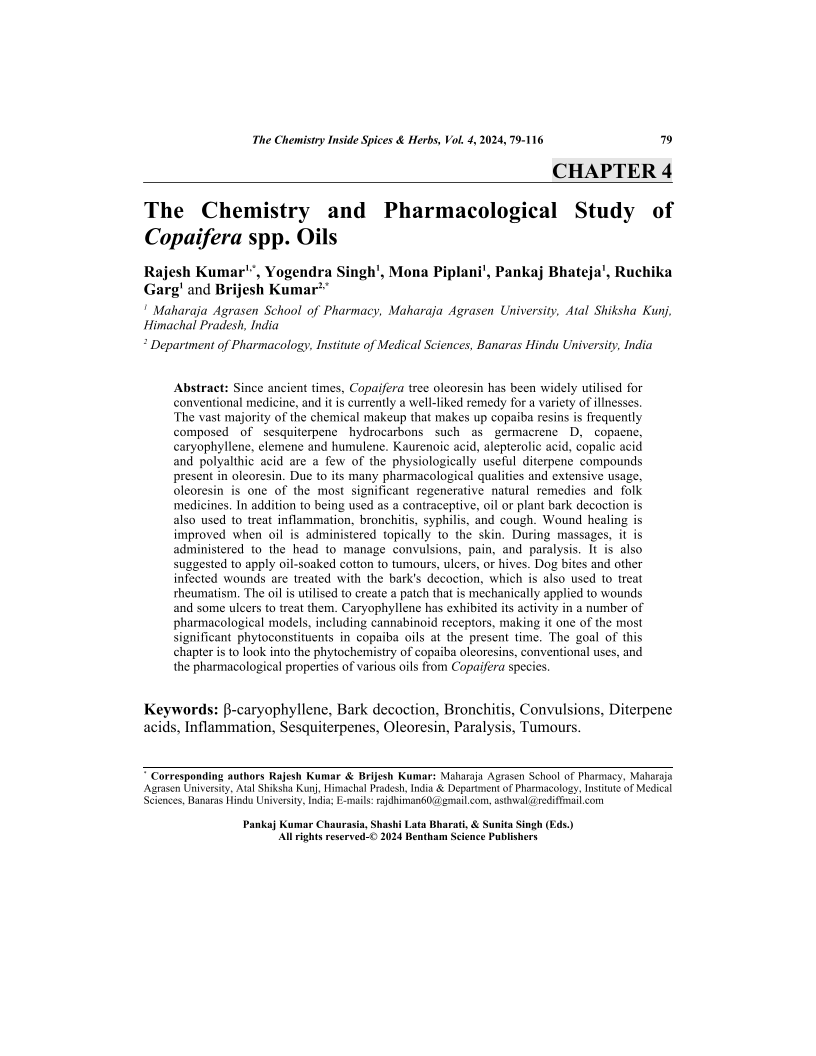The Chemistry and Pharmacological Study of Copaifera spp. Oils

- Authors: Rajesh Kumar1, Yogendra Singh2, Mona Piplani3, Pankaj Bhateja4, Ruchika Garg5, Brijesh Kumar6
-
View Affiliations Hide Affiliations1 Maharaja Agrasen School of Pharmacy, Maharaja Agrasen University, Atal Shiksha Kunj, Himachal Pradesh, India 2 Maharaja Agrasen School of Pharmacy, Maharaja Agrasen University, Atal Shiksha Kunj, Himachal Pradesh, India 3 Maharaja Agrasen School of Pharmacy, Maharaja Agrasen University, Atal Shiksha Kunj, Himachal Pradesh, India 4 Maharaja Agrasen School of Pharmacy, Maharaja Agrasen University, Atal Shiksha Kunj, Himachal Pradesh, India 5 Maharaja Agrasen School of Pharmacy, Maharaja Agrasen University, Atal Shiksha Kunj, Himachal Pradesh, India 6 Department of Pharmacology, Institute of Medical Sciences, Banaras Hindu University, India
- Source: The Chemistry inside Spices & Herbs: Research and Development: Volume 4 , pp 79-116
- Publication Date: July 2024
- Language: English
The Chemistry and Pharmacological Study of Copaifera spp. Oils, Page 1 of 1
< Previous page | Next page > /docserver/preview/fulltext/9789815196832/chapter-4-1.gif
Since ancient times, Copaifera tree oleoresin has been widely utilised for conventional medicine, and it is currently a well-liked remedy for a variety of illnesses. The vast majority of the chemical makeup that makes up copaiba resins is frequently composed of sesquiterpene hydrocarbons such as germacrene D, copaene, caryophyllene, elemene and humulene. Kaurenoic acid, alepterolic acid, copalic acid and polyalthic acid are a few of the physiologically useful diterpene compounds present in oleoresin. Due to its many pharmacological qualities and extensive usage, oleoresin is one of the most significant regenerative natural remedies and folk medicines. In addition to being used as a contraceptive, oil or plant bark decoction is also used to treat inflammation, bronchitis, syphilis, and cough. Wound healing is improved when oil is administered topically to the skin. During massages, it is administered to the head to manage convulsions, pain, and paralysis. It is also suggested to apply oil-soaked cotton to tumours, ulcers, or hives. Dog bites and other infected wounds are treated with the bark's decoction, which is also used to treat rheumatism. The oil is utilised to create a patch that is mechanically applied to wounds and some ulcers to treat them. Caryophyllene has exhibited its activity in a number of pharmacological models, including cannabinoid receptors, making it one of the most significant phytoconstituents in copaiba oils at the present time. The goal of this chapter is to look into the phytochemistry of copaiba oleoresins, conventional uses, and the pharmacological properties of various oils from Copaifera species.
-
From This Site
/content/books/9789815196832.chapter-4dcterms_subject,pub_keyword-contentType:Journal -contentType:Figure -contentType:Table -contentType:SupplementaryData105

